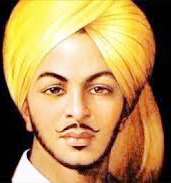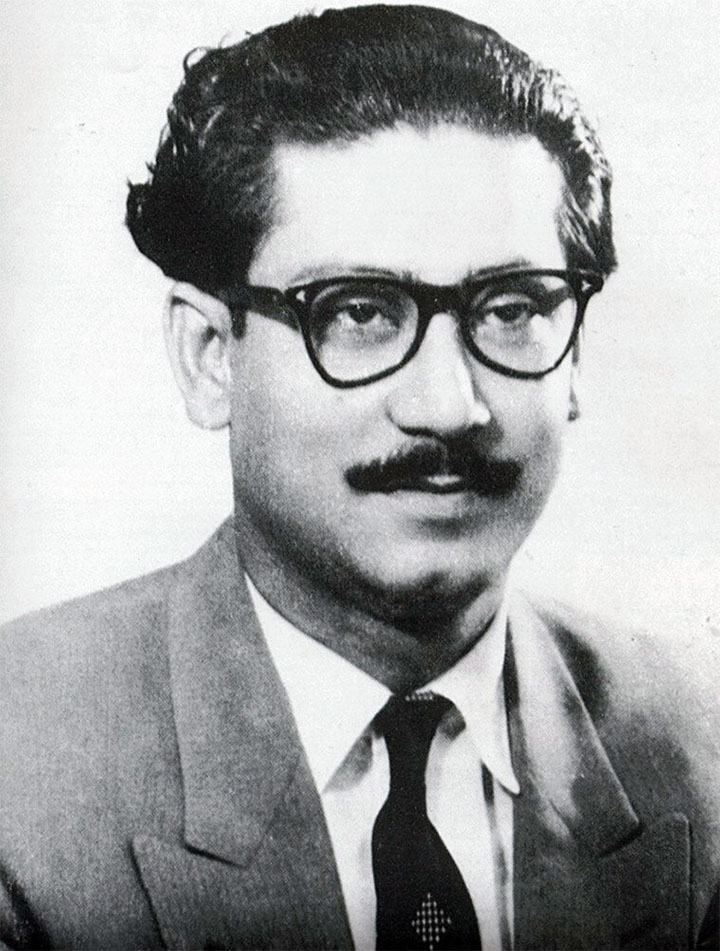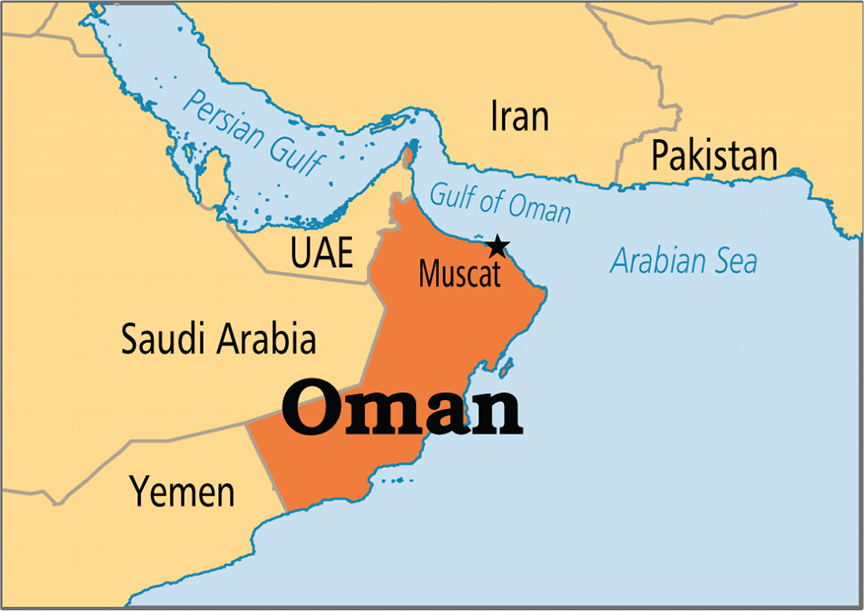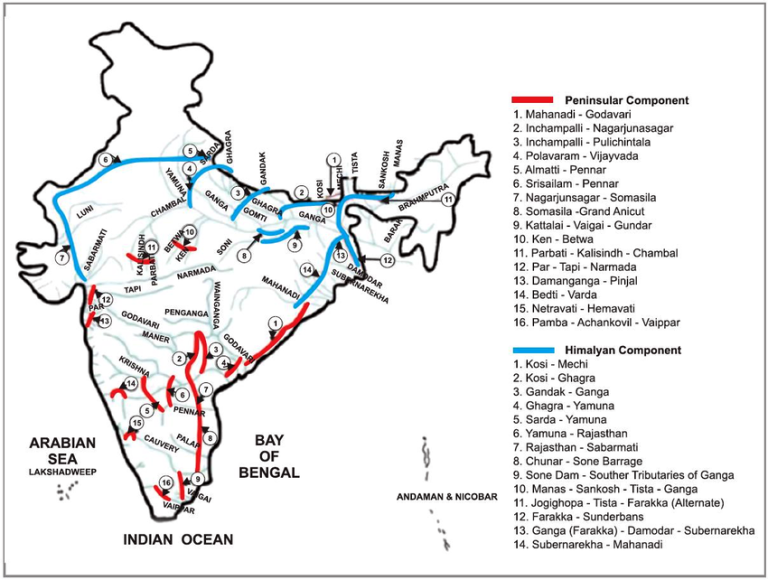Ken-Betwa Link Project
Why in News
Chief Ministers of Madhya Pradesh and Uttar Pradesh signed a memorandum of agreement to implement the Ken Betwa Link Project (KBLP), the first project of the National Perspective Plan for interlinking of rivers.
- The two states signed a tripartite agreement with the Centre on World Water Day (22nd March) to finally implement this ambitious project.
Key Points
- Ken Betwa Link Project (KBLP):
- The Ken-Betwa Link Project (KBLP) is the River interlinking project that aims to transfer surplus water from the Ken river in MP to Betwa in UP to irrigate the drought-prone Bundelkhand region.
- The region spread across the districts of two states mainly Jhansi, Banda, Lalitpur and Mahoba districts of UP and Tikamgarh, Panna and Chhatarpur districts of MP.
- The project involves building a 77-metre tall and a 2-km wide Dhaudhan dam and a 230-km canal.
- Ken-Betwa is one of the 30 river interlinking projects conceived across the country.
- The project has been delayed due to political and environmental issues.
- The Ken-Betwa Link Project (KBLP) is the River interlinking project that aims to transfer surplus water from the Ken river in MP to Betwa in UP to irrigate the drought-prone Bundelkhand region.
- Advantage of Interlining of Rivers:
- Reducing Drought: River linking will be a solution to recurring droughts in Bundelkhand region.
- Farmers’ Benefit: It will curb the rate of farmers suicide and will ensure them stable livelihood by providing sustainable means of irrigation and reducing excessive dependence on groundwater.
- Electricity Production: It will not only accelerate the water conservation by construction of a multipurpose dam but will also produce 103 MW of hydropower and will supply drinking water to 62 lakh people.
- Rejuvenate Biodiversity: Few are of the view that the introduction of dams inside the water scarce regions of panna tiger reserve (MP), will rejuvenate the forests of the reserve that in turn will pave the way for Rich Biodiversity in the region.
- Issues:
- Environmental: Because of certain environmental and wildlife conservation concerns like passing of the project though critical tiger habitat of panna tiger reserve, the project is stuck in for the approval from National Green Tribunal (NGT), and other higher authorities.
- Economic: There is a huge economic cost attached with the project implementation and maintenance, which has been rising due to delays in project implementation.
- Social: Reconstruction and rehabilitation caused due to displacement resulting from the implementation of the project will involve social cost as well.
Ken and Betwa Rivers
- Ken and Betwa rivers originate in MP and are the tributaries of Yamuna.
- Ken meets with Yamuna in Banda district of UP and with Betwa in Hamirpur district of UP.
- Rajghat, Paricha and Matatila dams are over Betwa river.
- Ken River passes through Panna tiger reserve.
- National Perspective Plan for interlinking of rivers:
- The National River Linking Project (NRLP) formally known as the National Perspective Plan, envisages the transfer of water from water ‘surplus’ basins where there is flooding, to water ‘deficit’ basins where there is drought/scarcity, through inter-basin water transfer projects.
- Under the National Perspective Plan (NPP), the National Water Development Agency (NWDA), has identified 30 links (16 under the Peninsular Component and 14 under the Himalayan Component) for the preparation of feasibility reports (FRs).
- The NPP for transferring water from water-surplus basins to water-deficit basins was prepared in August 1980.
Climate Finance
Why in News
The Finance Minister of India urged the advanced economies to scale up their commitments to climate finance and transfer of technologies - which are important for achieving climate-related commitments and goals.
- The Minister was addressing the International Conference on Disaster Resilient Infrastructure (ICDRI).
Key Points
- Climate Finance (Meaning):
- Climate finance refers to local, national or transnational financing—drawn from public, private and alternative sources of financing.
- It seeks to support mitigation and adaptation actions that will address climate change.
- The UNFCCC, the Kyoto Protocol and the Paris Agreement call for financial assistance from countries with more financial resources to those that are less endowed and more vulnerable.
- It is in accordance with the principle of “common but differentiated responsibility and respective capabilities”.
- Climate finance is critical to tackle the issues posed by climate change and achieve the goal of limiting the rise in earth’s average temperature to below 2 degree Celsius over pre-industrial levels, something the 2018 IPCC report has predicted.
- Commitment of Advanced Economies:
- Through the Cancun Agreements in 2010 developed countries committed to a goal of mobilizing jointly USD 100 billion per year by 2020 to address the needs of developing countries.
- The Green Climate Fund (GCF) was established in the Cancun Agreement and in 2011, it was designated as an operating entity of the financial mechanism.
- Under the Paris Agreement in 2015, developed countries confirmed this goal and agreed that prior to 2025, a new collective quantified goal from a floor of USD 100 billion per year shall be set.
- The Paris Agreement reaffirms the obligations of developed countries, while for the first time also encourages voluntary contributions by other Parties.
- Through the Cancun Agreements in 2010 developed countries committed to a goal of mobilizing jointly USD 100 billion per year by 2020 to address the needs of developing countries.
- Challenges:
- Almost 75% of the funds raised by the developed countries for climate finance are used domestically, despite developing countries bearing a significant burden of the emissions and loss of natural ecosystems as a result of the industrialisation-drive in the developed world.
- The total pledges to GCF was only USD 10.3 billion till July 2019, which is highly inadequate considering the estimated cost for developing countries to implement their Nationally Determined Contributions (NDCs) is USD 4 trillion.
- Most climate funds have flown into mitigation, rather than adaptation (mitigation refers to devising new solutions and way of doing things, while adaptation refers to managing the current issues).
- Climate finance has mostly concentrated on renewable energy, green buildings and urban transport, because it is easier to estimate their cash-flow cycles. Other sectors which hold implications of equal magnitude to our natural and social ecosystems, like agriculture, degradation of land, water, etc. have seen a muted interest.
- Climate Financing in India:
- The largest source of climate financing in India is public funding, which is routed through budgetary allocation and several funds and schemes related to climate change established by the Government of India such as National Clean Energy Fund (NCEF) and National Adaptation Fund (NAF).
- The Government of India also provides funding through eight missions established under the National Action Plan for Climate Change.
- It has established a Climate Change Finance Unit (CCFU) in the Ministry of Finance, which is the nodal agency for all climate change financing matters.
- However, public funding in India is inadequate and misused. For example, NCEF funds have been used to meet budgetary shortfalls in the Ministry of New and Renewable Energy (MoNRE).
- Additionally, there is no assessment of climate relevance of publicly funded projects in India, making it difficult to evaluate financial allocation towards climate action.
Way Forward
- Policy and industry action must converge to take climate finance ahead in India. There is a need to mainstream the mind-set of the business community ongoing sustainability in their business models. That would push the demand for alternate solutions on climate issues, thus giving further momentum to climate finance efforts.
- Climate financing needs to be reported in a way that better reflects its real value to developing countries and the real effort made by developed countries.
Coalition for Disaster Resilient Infrastructure
Why in News
Recently, the Prime Minister addressed the opening ceremony of International Conference on Disaster Resilient Infrastructure (ICDRI) through video conference.
- ICDRI is the annual international conference of the Coalition for Disaster Resilient Infrastructure (CDRI) in partnership with member countries, organizations and institutions to strengthen the global discourse on disaster and climate resilient infrastructure.
Key Points
- About:
- The Coalition for Disaster Resilient Infrastructure (CDRI) is a multi-stakeholder global partnership of national governments, UN agencies and programmes, multilateral development banks and financing mechanisms, the private sector, and knowledge institutions.
- The Prime Minister of India launched CDRI during his speech at the UN Climate Action Summit on 23rd September 2019.
- It aims to promote the resilience of new and existing infrastructure systems to climate and disaster risks in support of sustainable development.
- Members: 22 countries and 7 organisations.
- Thematic Areas: Governance and Policy, Risk Identification and Estimation, Standards and Certification, Capacity building, Innovation & Emerging Technology, Recovery and Reconstruction, Finance and Community based approaches.
- The CDRI Secretariat is based in New Delhi, India.
- The Coalition for Disaster Resilient Infrastructure (CDRI) is a multi-stakeholder global partnership of national governments, UN agencies and programmes, multilateral development banks and financing mechanisms, the private sector, and knowledge institutions.
- Need:
- The Sendai Framework for Disaster Risk Reduction (SFDRR) highlights the role of improved disaster resilience of infrastructure as a cornerstone for sustainable development.
- The SFDRR includes four specific targets related to loss reduction:
- Reduce global disaster mortality;
- Reduce the number of affected people;
- Reduce direct disaster economic loss; and
- Reduce disaster damage to critical infrastructure.
- Target (4) on infrastructure is an important prerequisite to achieving the other loss reduction targets set out in the framework.
- Between 2016 and 2040, the global annual infrastructure investment needs are estimated at USD 3.7 trillion per year. Thus, there is a clear case for ensuring that all future infrastructure systems are resilient in the face of disasters in order to protect our investments.
- Significance for India:
- Provide a platform for India to emerge as a global leader on climate Action and Disaster Resilience.
- CDRI boosts India's soft power, but more importantly it has wider connotation than just economics, as synergy between disaster risk reduction, Sustainable Development Goals (SDGs) and Climate Accord provides for sustainable and inclusive growth.
- Complement the International Solar Alliance (ISA).
- Facilitate India’s support to resilient infrastructure in Africa, Asia, etc.
- Provide access to knowledge, technology and capacity development for infra developers.
- Create opportunities for Indian infrastructure & technology firms to expand services abroad.
- Provide a platform for India to emerge as a global leader on climate Action and Disaster Resilience.
New Committee to Screen New Bank Licences
Why in News
The Reserve Bank of India (RBI) has set up a five-member Standing External Advisory Committee (SEAC), headed by former RBI Deputy Governor Shyamala Gopinath, for evaluating applications for universal banks and Small Finance Banks (SFBs).
- The Standing External Advisory Committee (SEAC) will be comprising eminent persons with experience in banking, financial sector and other relevant areas.
Key Points
- About the Committee:
- Tenure: The committee will have a tenure of three years.
- Secretariat of the Committee: The secretarial support to the committee would be provided by RBI’s Department of Regulation.
- Functions: The applications for universal banks and SFBs will first be evaluated by the RBI to ensure prima facie eligibility of the applicants, after which the SEAC will evaluate the applications.
- Small Finance Banks (SFBs):
- Small Finance Banks are the financial institutions which provide financial services to the unserved and unbanked region of the country.
- They are registered as a public limited company under the Companies Act, 2013.
- Scope of Activities:
- The small finance bank shall primarily undertake basic banking activities of acceptance of deposits and lending to small business units, small and marginal farmers, micro and small industries and unorganised sector entities.
- It can also undertake other non-risk sharing simple financial services activities, not requiring any commitment of own funds, such as the distribution of mutual fund units, insurance products, pension products, etc.
- The small finance bank can also become an Authorised Dealer in foreign exchange business for its clients’ requirements.
- There will not be any restriction in the area of operations of SFBs; however, preference will be given to those applicants who, in the initial phase, set up the bank in a cluster of under-banked States/districts, such as in the North-East, East and Central regions of the country.
- Universal Banks:
- Universal Banks are the financial entities like the commercial banks, Financial Institutions, Non-Banking Financial Companies (NBFCs), which undertake multiple financial activities under one roof, thereby creating a financial supermarket.
- The entities focus on leveraging their large branch network and offer a wide range of services under a single brand name/Bank’s name.
- According to the guidelines on on-tap licensing of universal banks issued in August 2016, resident individuals and professionals having 10 years of experience in banking and finance at a senior level are eligible to promote universal banks.
- However, large industrial houses are excluded as eligible entities but are permitted to invest in the banks up to 10%.
- A non-operative financial holding company (NOFHC) has been made non-mandatory in case of promoters being individuals or standalone promoting/converting entities who/which do not have other group entities.
- Related Development:
- Earlier, an internal working group of the RBI in 2020 had proposed an overhaul of licensing policy for private banks and suggested allowing large corporate and industrial houses to float banks in India after suitable amendments to the Banking Regulation Act, 1949.
- However, former RBI Governor Raghuram Rajan has criticised the proposal saying it would lead to “connected lending (a situation in which the bank's controlling owner extends loans of inferior quality at lower interest rates to himself or his connected parties)”.
- Earlier, an internal working group of the RBI in 2020 had proposed an overhaul of licensing policy for private banks and suggested allowing large corporate and industrial houses to float banks in India after suitable amendments to the Banking Regulation Act, 1949.
Non-Operative Financial Holding Company
- Non-Operative Financial Holding Company (NOFHC) means a non-deposit taking NBFC.
- As per the Banking Guidelines, promoter or promoter group will be permitted to set up a new bank only through a wholly-owned Non-operative Financial Holding Company (NOFHC).
- Such NOHFC holds the Bank as well as all other financial services companies regulated by RBI or other financial sector regulators based on permissible regulatory prescriptions.
On-tap Licensing of Universal Bank
- An ‘on-tap’ facility means the RBI will accept applications and grant licenses for banks throughout the year.
- The policy allows aspirants to apply for universal bank license at any time, subject to the fulfillment of the set conditions.
Shaheed Diwas
Why in News
Prime Minister of India paid tributes to Bhagat Singh, Sukhdev, Rajguru on Shaheed Diwas (23rd March).
- The Day is also known as Martyrs’ Day or Sarvodaya Day.
- This Day should not be confused with the Martyrs’ Day observed on 30th January, the day Mahatma Gandhi was assassinated.
Key Points
- About:
- Every year on 23rd March, Shaheed Diwas is observed.
- It was on this day that Bhagat Singh, Sukhdev and Rajguru were executed by the British government in 1931.
- They were hanged to death for assassinating John Saunders, a British police officer in 1928. They had mistook him for British police superintendent James Scott.
- It was Scott who had ordered lathi charge, which eventually led to the death of Lala Lajpat Rai.
- While Singh, who had publicly announced avenging Rai’s death, went into hiding for many months after this shootout, he resurfaced along with an associate Batukeshwar Dutt, and the two, in April 1929, set off two explosive devices inside the Central Legislative Assembly in Delhi.
- Allowed themselves to be arrested, while shouting the famous slogan: “Inquilab Zindabad“, or “Long live the revolution”.
- They were hanged to death for assassinating John Saunders, a British police officer in 1928. They had mistook him for British police superintendent James Scott.
- Their lives inspired countless youth and in their death, they set an example. They carved out their own path for independence, where individual heroism and their aggressive need to do something for the nation stood out, departing from the path followed by the Congress leaders then.
- Bhagat Singh:

- Born as Bhaganwala on the 26th September, 1907, Bhagat Singh grew up in a petty-bourgeois family of Sandhu Jats settled in the Jullundur Doab district of the Punjab.
- He belonged to a generation that was to intervene between two decisive phases of the Indian national movement - the phase of the 'Extremism' of Lal-Bal-Pal and the Gandhian phase of nonviolent mass action.
- In 1923, Bhagat Singh joined the National College, Lahore which was founded and managed by Lala Lajpat Rai and Bhai Parmanand.
- The College was set up as an alternative to the institutions run by the Government, bringing to the field of education the idea of Swadeshi.
- In 1924 in Kanpur, he became a member of the Hindustan Republican Association, started by Sachindranath Sanyal a year earlier. The main organiser of the Association was Chandra Shekhar Azad and Bhagat Singh became very close to him.
- It was as a member of the HRA that Bhagat Singh began to take seriously the philosophy of the Bomb.
- Armed revolution was understood to be the only weapon with which to fight British imperialism.
- In 1925, Bhagat Singh returned to Lahore and within the next year he and his colleagues started a militant youth organisation called the Naujawan Bharat Sabha.
- In April 1926, Bhagat Singh established contact with Sohan Singh Josh and through him the 'Workers and Peasants Party' which brought out the monthly magazine Kirti in Punjabi.
- For the next year Bhagat Singh worked with Josh and joined the editorial board of Kirti.
- In 1927, he was first arrested on charges of association with the Kakori Case, accused for an article written under the pseudonym Vidrohi (Rebel). He was also accused of being responsible for a bomb explosion at Lahore during the Dussehra fair.
- In 1928, Bhagat Singh changed the name of Hindustan Republican Association to Hindustan Socialist Republic Association (HSRA). In 1930, when Azad was shot, the HSRA collapsed.
- Naujawan Bharat Sabha replaced HSRA in Punjab.
- His time in the prison was spent protesting, seeking better living conditions for inmates. During this time, he gained the sympathy of the public, especially when he joined fellow defendant Jatin Das in a hunger strike.
- The strike ended with Das’ death from starvation in September 1929. Two years later, Singh was convicted and hanged at the age of 23.
- Born as Bhaganwala on the 26th September, 1907, Bhagat Singh grew up in a petty-bourgeois family of Sandhu Jats settled in the Jullundur Doab district of the Punjab.
Gandhi Peace Prize
Why in News
The father of the nation of Bangladesh Sheikh Mujibur Rahman and the late Sultan of Oman, Qaboos bin Said Al Said are to be awarded the Gandhi Peace Prize for 2020 and 2019 respectively.
Key Points
- About the Gandhi Peace Prize:
- Institution of Award: The annual award was instituted by the Government of India in 1995 during the commemoration of the 125th birth anniversary of Mahatma Gandhi for those involved in social, economic and political transformation through non-violence.
- Rewards: The award carries an amount of Rs. 1 crore, a Citation in a scroll, a plaque as well as an exquisite traditional handicraft/handloom item.
- Conferred Upon: The prize can be given to individuals, associations, institutions or organizations.
- It can be divided between two persons/institutions who are considered by the Jury to be equally deserving of recognition in a given year.
- It is open to all persons regardless of nationality, creed, race or sex.
- Selection Committee: The jury chaired by the Prime Minister and other members are the Chief Justice of India, the leader of the single largest Opposition party in the Lok Sabha, Lok Sabha Speaker and founder of Sulabh International.
- Sheikh Mujibur Rahman:

- He was known as Bangabandhu. Also regarded as "Jatir Janak" or "Jatir Pita" (both meaning "Father of the Nation") of Bangladesh.
- He was born on 17th March 1920 in Tungipara, India (now in Bangladesh) and passed away on 15th August 1975 in Dhaka, Bangladesh.
- Year 2020 marked the birth centenary of Bangabandhu.
- He was a Bengali leader who became the first prime minister of Bangladesh (1972–75) and later became the president of the same in 1975.
- He began his formal political career in 1949 as a co-founder of the Awami League.
- He played a crucial role in advocating political autonomy for East Pakistan, the detached eastern part of Pakistan (now Bangladesh).
- He was chosen for Gandhi Peace Prize 2020 in recognition of his outstanding contributions towards social, economic and political transformation through non-violent and other Gandhian methods.
- He was a champion of human rights and freedom, and is a hero to Indians as well.
- The legacy and inspiration of Bangabandhu has made the heritage of both countries more comprehensive and deep-rooted, and that the path shown by Bangabandhu has laid a strong foundation for the partnership, progress and prosperity of both countries over the last decade.
- Qaboos bin Said Al Said:

- He has been the Arab world's longest-serving ruler. He ruled Oman for almost half a century.
- In 1970, with the help of British, Qaboos overthrew his father in a bloodless coup, emerging as the Sultan at age 29.
- He was a visionary leader whose twin policy of moderation and mediation in addressing international issues won him praise and respect across the globe.
- He was also the architect of the special ties between India and Oman.
- He had studied in India and always maintained a special relationship with India.
- The Gandhi Peace Prize 2019 recognises his leadership in strengthening the ties between India and Oman and his efforts to promote peace in the Gulf region.
- He has been the Arab world's longest-serving ruler. He ruled Oman for almost half a century.

